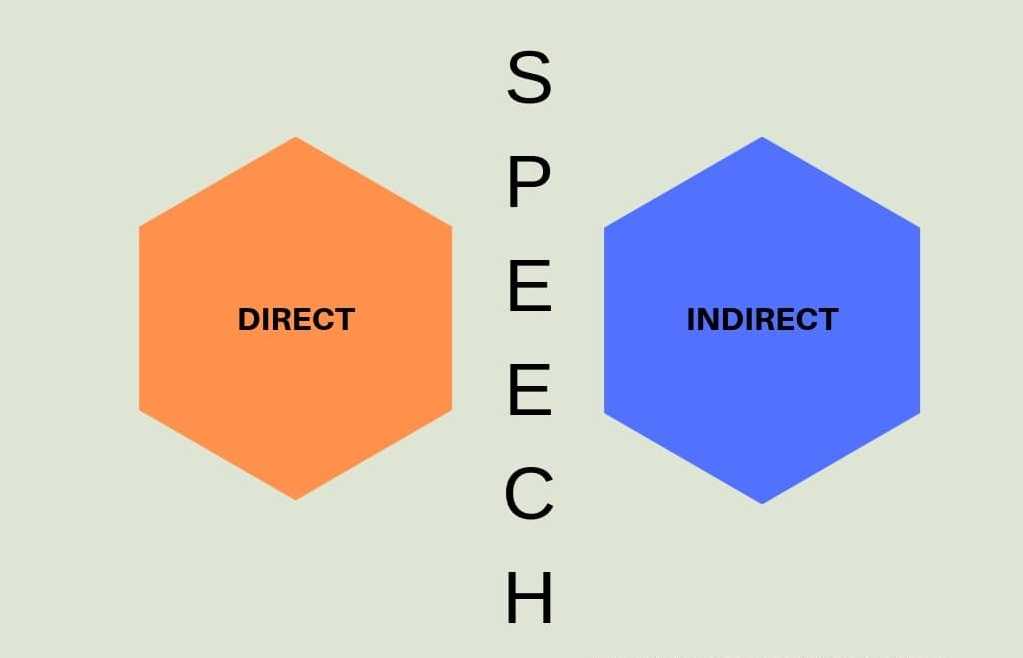Direct and Indirect Speech in English Grammar with Examples [PDF]
In this lesson of English grammar, we will be going to learn What is Direct and Indirect Speech in English Grammar? and we also going to see the definition of direct and indirect speech and their examples. So let’s jump in. To download the lesson in PDF format, please find the downloadable link attached below in the article.

Direct Speech Definition:
Direct speech is writing that quotes what somebody has said in full, and is meant to be an accurate record of what was said, and by whom it was said.
Indirect Speech Definition:
Indirect speech is writing that provides a summary of what somebody was supposed to have said, and when they said it. As it is a summary it does not have to be a word for word account of conversations, meetings, or group discussions.
In English grammar, the importance of clearly defining the difference between direct and indirect speech should not be underestimated.
Putting words incorrectly into direct speech and indirect speech can alter the context of those words, and change the meaning of the entire piece of writing.
When a writer puts words into direct speech they are declaring that the words were definitely those of the person being quoted.
On the other hand, when words are placed in indirect speech it implies that the writer is unsure that the person used those exact words, or that somebody said that the person used those words.
In the context of fictional writing using the wrong type of speech wrong could just appear to be unprofessional.
However, in terms of non-fiction writing getting direct or indirect wrong, there could be consequences for the writer if the work is published electronically or in hard copy.
Anyway, here is how to correctly record direct speech in written texts. To show that a quote was directly spoken it is enclosed between ” .” These speech marks indicate that the words were actually spoken:
- Frank said, “It was so cold outside that I had to put on an extra jumper just to stay warm.”
- The President stated that “It is the time that the opposition stopped making pointless remarks, and actually started to make positive suggestions, which would serve the national interest.”
- I was livid with my manager and said “That was a complete waste of my time and effort after the director pulled my plan to pieces. You failed to back me up in the meeting, why?”
The grammar rules for indirect speech [External Links] are not the same, as shown here. Notice that there are no speech marks so that the reader knows that it is what someone is supposed to have said. instead of a word for word account of what was said.
- Jane confirmed that Roger was happy to have chicken chow mien from the takeaway tonight.
- Martha told me that she was not content with having to settle for the assistant manager role when she was better qualified and more experienced than the manager.
- The teacher was not happy with her students, as none of them had bothered to do the homework she set them.
Points to Remember when using Direct And Indirect Speech:
The grammar and punctuation required for direct speech are more specific than it is for indirect speech. This is due to direct speech being a word for word account of what somebody has said.
Such accuracy is even more important in a non fiction account. Direct speech is used in minutes from meetings as well as court hearings, and in legislatures too. Inaccurate records could have consequences and would certainly be regarded as unprofessional, possibly leading to the person recording the proceedings to lose their job.
- The main rule for direct speech is to make sure that the direct quote is fully enclosed by speech marks. When the quote has finished the comma, full stop, exclamation mark or question mark should come before the closing speech mark.
- When a lengthy speech is being recorded then the writer may choose to break that speech up into different parts, this particularly apt when the speech is covering a variety of different topics.
- Direct speech is also used when two or more people are involved in a dialogue. This would be written in the same way for fiction and non-fiction accounts. The words of each speaker are given their own line or paragraph. The name of each speaker is indicated before their words are quoted.
- Indirect speech does not have to be accurate as the writer is only attempting to convey the outline or gist of what was said and not provide a full quote. The writer may want to consider how they phrase what was said as it might not give the reader the impression of events that the writer was aiming to convey.
- As indirect speech does not require speech marks what was said goes before the punctuation, which ends the sentence.
A Must Watch Video Lesson on Direct and Indirect Speech:
So this is the complete lesson on Direct and Indirect Speech in English Grammar, I hope you liked it, if you have any doubts, feel free to share those on the comment section.